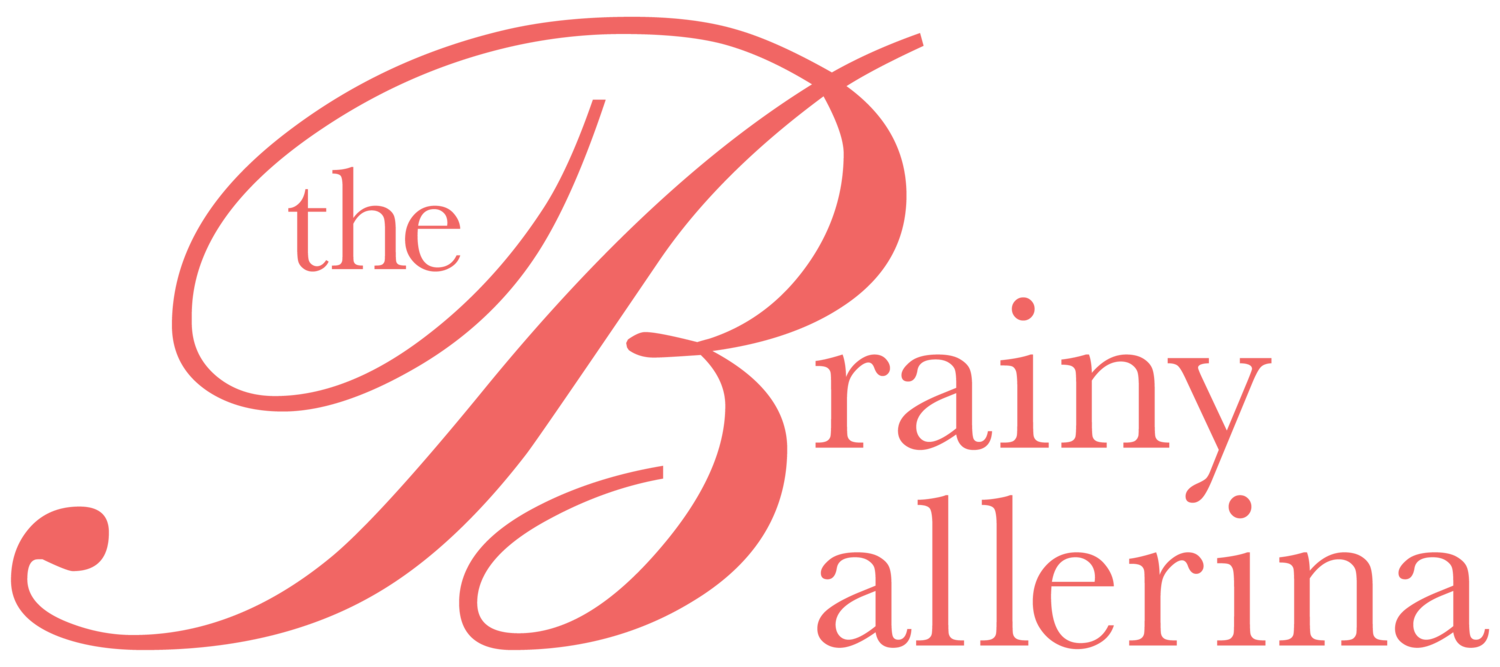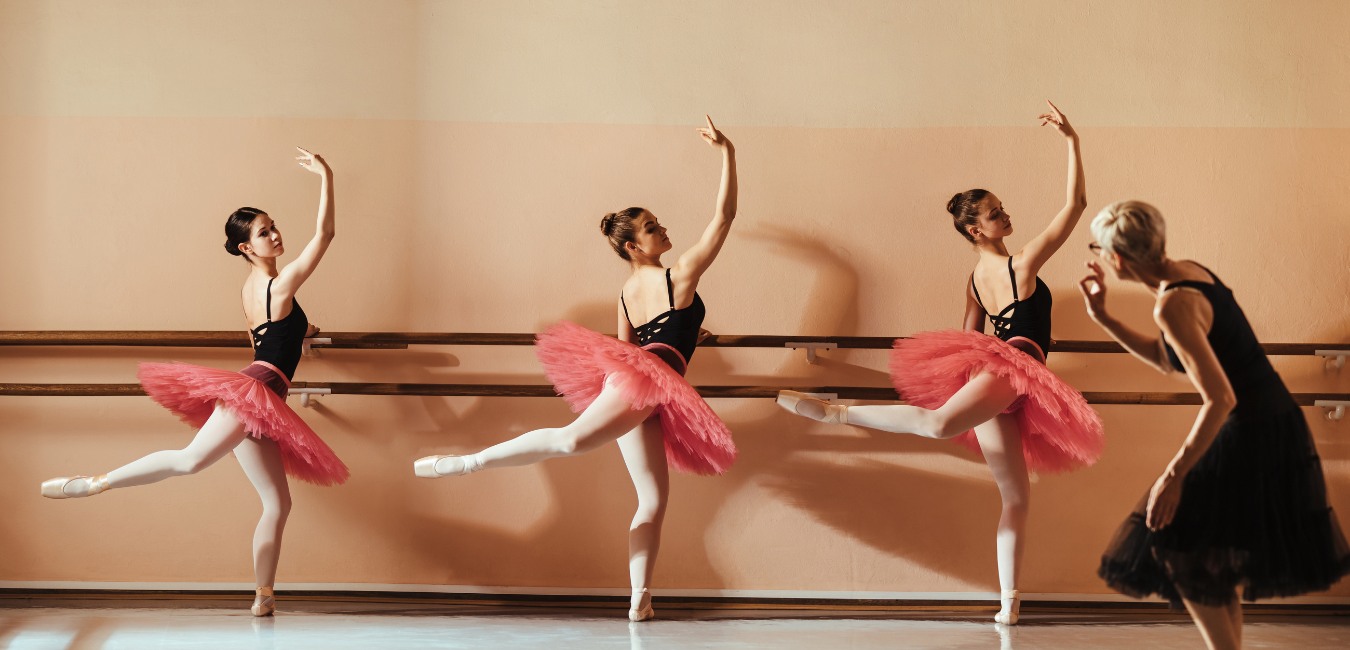Corrections: Friend, not Foe!
Young dancers today are inundated with videos and images of amazing dancers, thanks to Instagram, TikTok, and social media in general. While it’s wonderful to look at these photos and videos and want to dance just like these incredible artists, it won’t happen without good solid training, and without applying the corrections that you receive in class.
Throughout my dance career, I’ve been a Director, choreographer, and educator for conventions and studios all over the United States, including Steps on Broadway and Broadway Dance Center in New York City. The biggest thing I want young dancers today to embrace?
✨ Corrections.
Except for in the most unique and extreme cases, almost every single teacher out there (including your teachers at your studio!) gives you corrections because they believe in your skill and ability, they value you as a dancer, and they want to guide you toward the amazing artist they know you can be.
Corrections are not punishment, and teachers who give you personalized corrections (calling you out by name in class to make an adjustment) have noticed you and believe in what you can do. They are NOT calling you out to embarrass you. Rather, they are so excited by your potential that they need to tell you right away what they want to see you fix.
Read on for some tips on how to internalize corrections in 2024 to be the best dancer your teachers know you can be!
Apply it to yourself
Whether you’re in a dance class, convention, or audition assume that any correction given to the entire group is meant for you personally.
If a teacher is noticing that someone in the class should make a correction, take advantage of their feedback and apply it to yourself too. If you’re taking a ballet barre, and you’re in between the right and left side, try to apply the group correction to yourself on the left side. If you’re in a class where you’re doing a combination in groups, apply the correction the next time it’s your group’s turn. If you’re in a show, and the director or choreographer (or music director, in a musical) gives a group note, the same thing applies.
In general, a dancer should have the mindset of “Ah yes, if everyone is getting this note, I am included in that group of people” rather than thinking “Everyone else is doing it wrong, but certainly, I’m doing it right”.
Remember that corrections are less about “right” and “wrong”, and more about honoring the choreographer’s vision more closely as well as improving and streamlining technique to be able to do all of the amazing things your dance inspirations can do.
Write it down!
Whether it’s in a notebook, on your phone, or whatever your preferred method of keeping track of information is, writing down your corrections in class is paramount to making the connection between what your teachers notice are your “habits” as a dancer. (You can divide it up by dance genre if you attend a studio where you take multiple styles of dance, or by teacher if you go to a ballet school with multiple instructors in the week.)
If you take a class where the teacher doesn’t give many individual, personalized questions, don’t be afraid to go up after class and ask if they have any suggestions for things to improve. If you’re in a class where your teacher does give individual corrections, but you didn’t get any in that class, you should do the same thing.
I give personal corrections in my classes at Steps on Broadway and Broadway Dance Center, and I give personal notes to the actors in my shows, but sometimes I just don’t notice something one time that I would notice another time. Remember, teachers and choreographers are human too! We love it when you tell us you’d like more corrections.
Ask for help!
When you’re in class and a teacher does give you a correction, try to get instant feedback on the correction.
For example, if a teacher gives you a correction about your pirouettes, rather than nodding your head, or saying “yes” or “thank you”, set up to do another pirouette right in the moment. If there is time in the class, the teacher likely will be able to give you a bit more in-depth feedback if you execute the turn again right away. However, they might not have enough time to explain exactly what they mean in great detail.
If this is true, do your absolute best to remember the correction, and after class, go up to the teacher and ask them for more clarification! They are certainly interested in helping you to understand the correction. Teachers don’t give corrections if they’re not interested in you actually understanding and internalizing the change they want you to make. When I teach open class at Steps on Broadway, I am always thrilled when a student comes up to me and wants more feedback on a correction, and I know my colleagues are as well. Going back to the idea of corrections being a gift, I love to see dancers who are interested in truly improving their dancing by understanding what I’ve suggested they work on to improve!
Take your Time!
Sure, there are some corrections that a teacher might expect should be applied right away, such as turning the wrong way, or being on the wrong foot. But in general, you and your teachers should both be aware that most corrections take attentive, diligent thought and time to see a difference. What your teachers are looking for is that you’re aware of your corrections, and you’re actively trying to apply them.
As a dancer, the correction I got the most was that my shoulders were up. I had to always actively concentrate on getting them down, and now as a teacher, I have spent a lot of time figuring out how to effectively give the same correction to my students. Sometimes you may experience the 1 step forward, 2 steps back of temporarily slipping back into an old habit even after you’ve been experiencing improvement, and that’s okay too, as long as you are aware of it, and reignite the desire to improve the habit.
You must remember that social media is a finished product, not a work in progress. Your inspirations are all in class, doing the same things you’re doing - working hard, trying to improve, and asking to be guided by teachers, through corrections!
Meet the Author
Rebecca Frazier is a New York City based Director, Choreographer, and Teaching Artist. She's on the full-time faculty at Steps on Broadway and the guest faculty at Broadway Dance Center, teaching theater dance. She's directed and choreographed musicals nationwide, choreographed music videos and short films, and taught for conventions and studios throughout the United States.
Learn more about Rebecca at iamrebeccafrazier.com or follow her on Instagram @beccaa118.
If you liked this post, you might also like:




